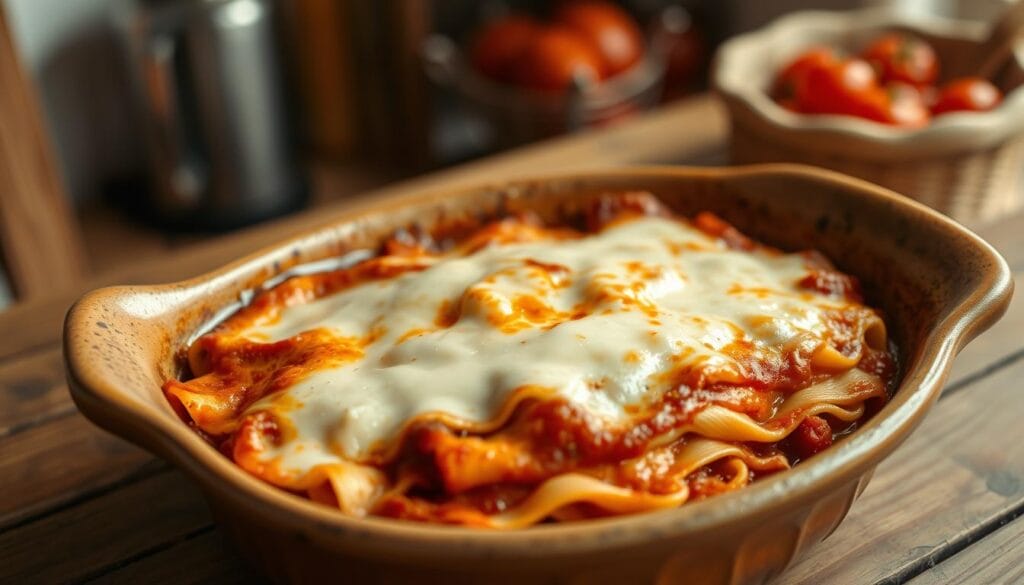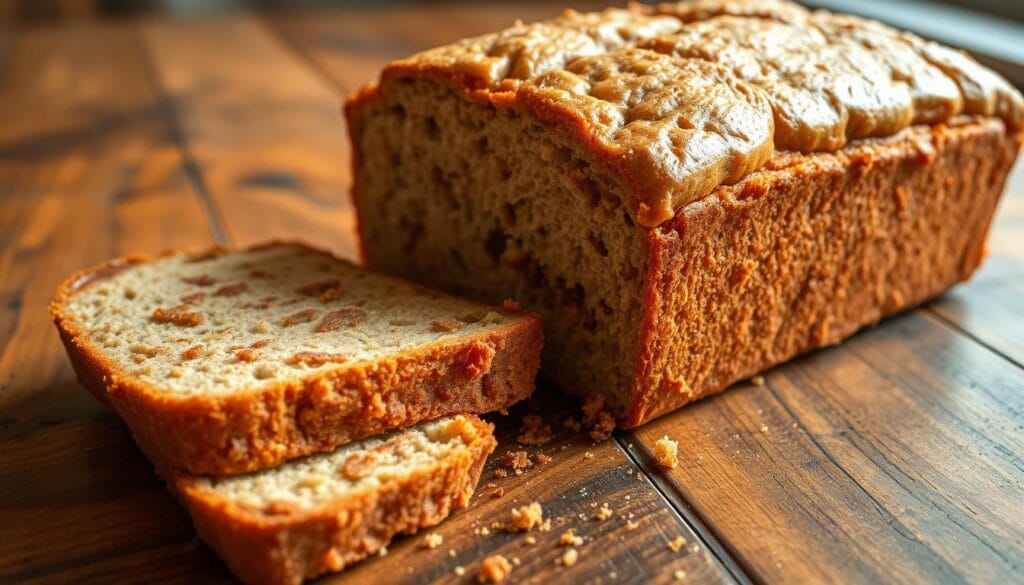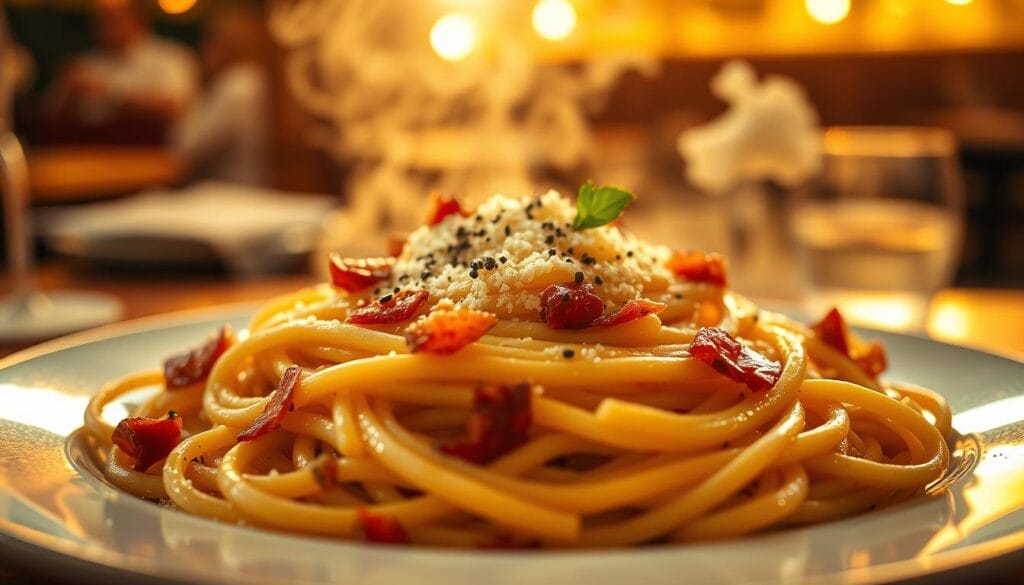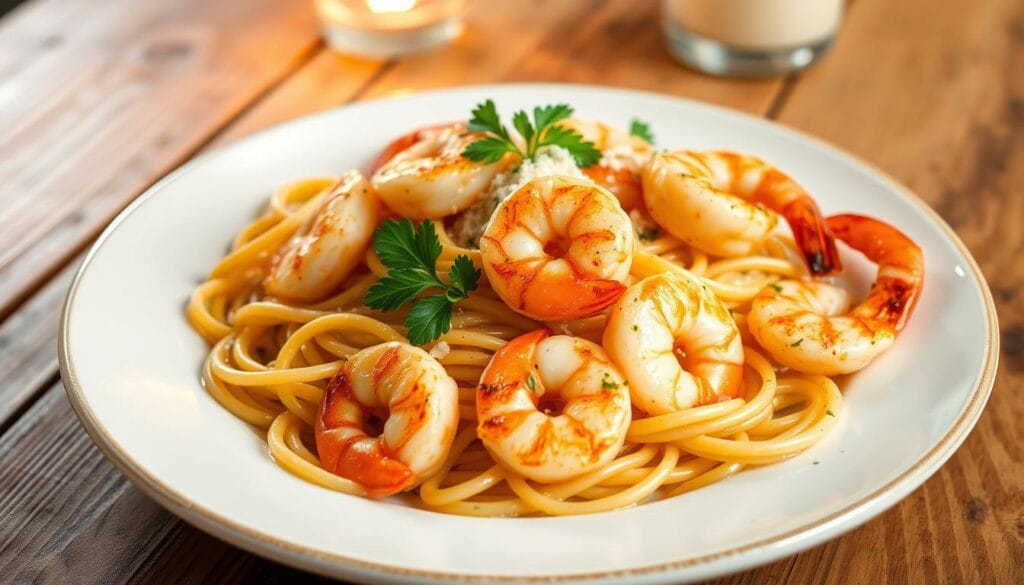The first time I made lasagna, it was a big moment. The aroma of tomato and cheese filled the room. I want to share this recipe because it delivers on its promises: tender noodles, rich meat sauce, and creamy cheese.
This lasagna recipe is perfect for any day of the week. It takes about 1 hour and 35 minutes from start to finish. You’ll get eight big servings. You layer the sauce, noodles, and your cheese choice in a 9×13-inch dish. Bake it at 350°F for soft cheese or 375°F for a crispier top.
You can pick a hearty meat sauce or a lighter tomato-basil one. After resting, it slices perfectly. Calories vary by choice: about 501 with beef and cottage cheese, 574 with five cheeses.
This recipe creates a lasagna that brings everyone to the table, eager for seconds. If you’re thinking about making it, go for it tonight.
Introduction to Lasagna: A Classic Comfort Food
I grew up calling lasagna the weekend hug. It’s the Italian-American comfort that warms up cold nights and brings people together during the holidays. What makes it special is its simple parts: perfectly cooked noodles, rich layers of cheese, bright tomato sauce, and a bubbly, browned top. No matter the type of lasagna I make, those key elements are always there.
Choosing how to make your lasagna can vary. You might go for a hearty meat version with beef, sausage, and pancetta spiced up with basil and oregano, and a splash of red wine. Or, you could opt for a cheese-packed lasagna with ricotta, mascarpone, and other cheeses, topped with a sharp Parmesan or Grana Padano. On busy nights, a lighter tomato-basil sauce, a bit of meat, and cottage cheese does the trick. Each style suits a different mood, but they all make a great lasagna when balanced well.
How you use noodles is key. No-boil noodles can save you time, while pre-boiled wavy noodles offer better texture. I layer sauce, noodles, and cheese, repeating until I’ve built three to four layers. Covering it with foil helps it cook evenly, then I uncover it to let the top get golden and bubbly.
Planning ahead is my secret. I prepare the sauce up to two days before, and can even assemble the whole lasagna early too. Leftovers stay good in the fridge for days. If you need to keep it longer, freeze it. When ready, just thaw and reheat. Letting the lasagna sit after baking ensures clean slices, perfect for sharing.
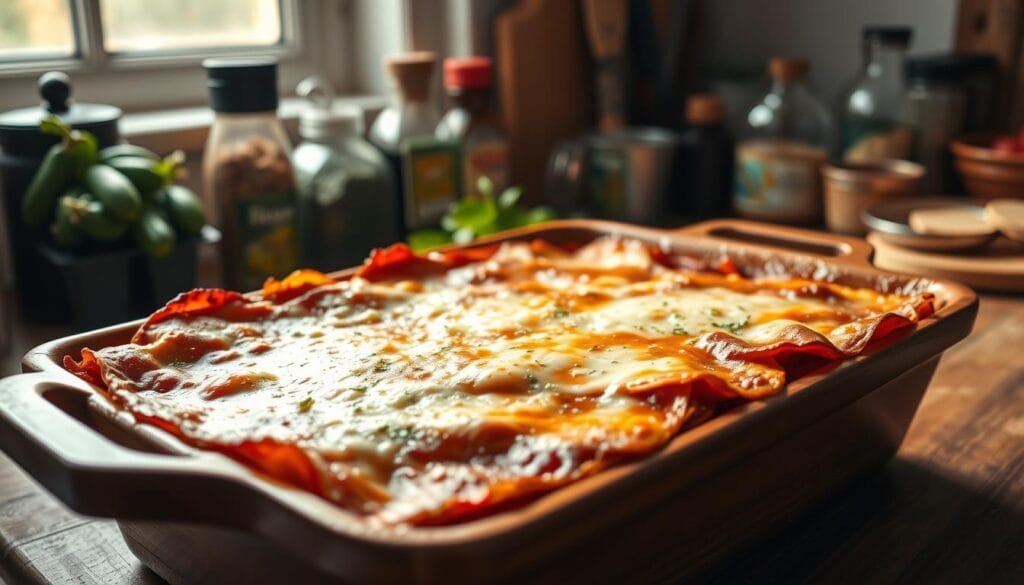
| Style | Core Components | Noodle Method | Assembly & Bake | Make-Ahead & Storage | Best For |
|---|---|---|---|---|---|
| Hearty Meat (Traditional) | Ground beef, hot Italian sausage, pancetta; herbs; red wine; balanced tomato sauce | Parboil dried wavy noodles ~4 minutes for firm slices | Start with sauce; 3–4 layers; foil to steam; uncover to brown | Sauce 2 days ahead; assemble 1–2 days ahead; fridge 4 days; freeze 2–3 months | Holiday crowds and a traditional lasagna recipe with depth |
| Cheese-Forward | Ricotta, mascarpone, mozzarella, fontina, Parmesan/Grana Padano | No-boil sheets for quick 20-minute assembly | Light sauce base; even cheese layers; foil on, then off to bubble | Assemble 1–2 days ahead; fridge 4 days; freeze 2–3 months | Comfort-first classic lasagna recipe with a creamy finish |
| Weeknight Lean | Tomato-basil sauce; cottage cheese; light meat layer | No-boil or brief parboil for speed and structure | Simple 3-layer build; moderate bake to set | Make sauce 2 days ahead; chill leftovers up to 4 days | Faster homemade lasagna recipe for busy evenings |
| Universal Tips | Al dente texture; balanced sauce; gooey top | Choose based on time vs. texture | Rest 10–15 minutes before slicing | Thaw in fridge; reheat until center is hot | Clean layers and reliable results |
Ingredients You’ll Need for a Perfect Lasagna
I start with sturdy noodles so layers stay tall and neat. Use 12 whole wheat lasagna noodles, a 9-ounce box of no-boil noodles (about 12 to 15 sheets), or 15 dried wavy noodles parboiled 4 minutes. No-boil makes an easy lasagna recipe faster, while wavy noodles help the slices hold.
For a meat lasagna recipe, I brown 1 pound lean ground beef. For more depth, I blend 1 pound ground beef, 1 pound hot Italian sausage, and 5 ounces pancetta or diced bacon. A bit of fat makes the sauce cling to each layer.
Aromatics matter. I sauté 1 cup chopped onion with 2 to 6 cloves of garlic, then season with salt, black pepper, and oregano. Fresh basil and parsley add lift. A pinch of sugar in the sauce balances acidity and keeps flavors round.
Cheese sets the tone. For a lighter route, I use 16 ounces cottage cheese, 1/2 cup shredded Parmesan, and 2 eggs. For a richer mix, I go with 8 ounces ricotta, 8 ounces mascarpone, 1 cup grated Parmigiano Reggiano or Grana Padano, 1 egg, 1/2 cup torn basil, 8 ounces shredded mozzarella, and 5 ounces fontina.
For a hearty meat lasagna, I combine 16 ounces ricotta with 5 ounces fontina, 1 egg plus 1 yolk, and 1/4 teaspoon nutmeg. I add 8 ounces shredded mozzarella and 1/2 cup finely grated Parmesan for a golden top.
Smart swaps keep shopping simple. Cottage cheese can be used instead of ricotta. Mascarpone can be replaced by a mix of 8 ounces cream cheese and 1/4 cup heavy cream. Use Grana Padano or Pecorino Romano for Parmesan. Provolone is a good swap for mozzarella or fontina.
For the sauce, I use 4 1/2 cups tomato-basil pasta sauce, or 3 cups homemade red sauce, or I make one from scratch. I start with two 28-ounce cans crushed tomatoes, 3 tablespoons tomato paste, 1 cup dry red wine, 1/2 cup beef stock, fresh herbs, and 2 teaspoons sugar. A splash of extra-virgin olive oil in the pan makes the aromatics shine.
For a vegetarian lasagna recipe, I omit the meat. Instead, I rely on ricotta, mascarpone, mozzarella, and basil. Most cheeses are okay for vegetarians, but some Parmesan can have animal rennet. So, I pick rennet-free kinds or add nutritional yeast to the ricotta for extra flavor.
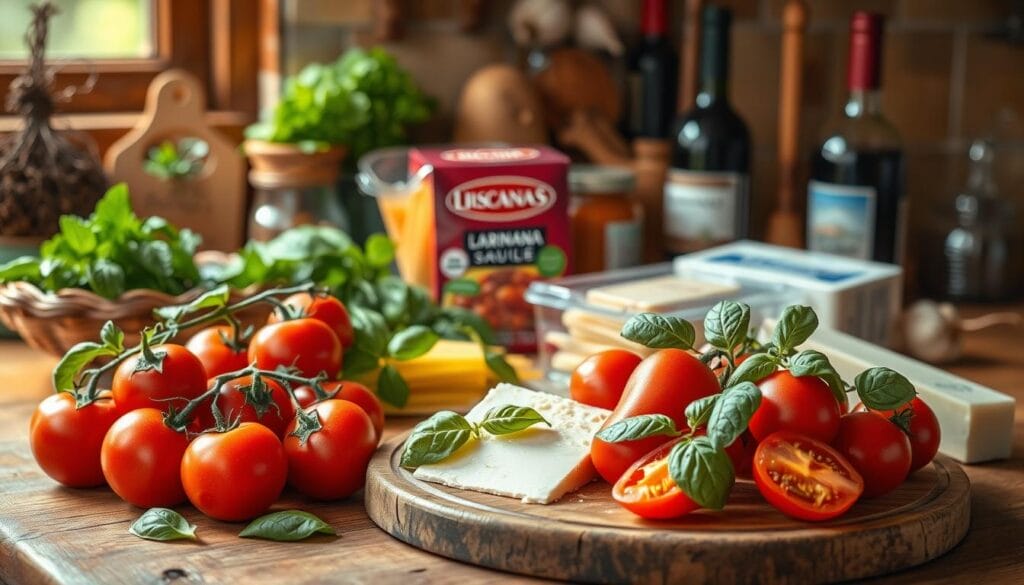
| Component | Options | Why It Works | Best For |
|---|---|---|---|
| Noodles | 12 whole wheat; 12–15 no-boil; 15 dried wavy, parboiled 4 min | No-boil cuts prep; wavy noodles give height and clean slices | Easy lasagna recipe; meal prep |
| Meat | 1 lb lean ground beef; or beef + hot Italian sausage + pancetta | Lean keeps it light; mixed meats add depth and richness | Meat lasagna recipe with bold flavor |
| Aromatics | Onion, 2–6 cloves garlic, oregano, basil, parsley, sugar, salt, pepper | Balances acidity and builds a fragrant base | All styles |
| Cheese (Light) | Cottage cheese, Parmesan, 2 eggs | Protein-forward, budget-friendly, creamy set | Easy lasagna recipe |
| Cheese (Rich) | Ricotta, mascarpone, Parmigiano Reggiano/Grana Padano, basil, mozzarella, fontina | Velvety texture, savory depth, great melt | Company-worthy bakes |
| Sauce | Tomato-basil jar; homemade red; from-scratch meat sauce with wine and stock | Controls sweetness, body, and complexity | Both meat and vegetarian lasagna recipe |
| Swaps | Cottage for ricotta; cream cheese + cream for mascarpone; Romano or Grana Padano for Parmesan; provolone for mozzarella or fontina | Keeps flavor while using what’s on hand | Weeknight flexibility |
| Olive Oil | Extra-virgin for sautéing and parchment | Prevents sticking; adds aroma | All builds |
| Nutrition (per serving) | Beef + cottage cheese: ~501 cal, 19g fat, 36g protein, 47g carbs, ~999mg sodium; Five-cheese: ~574 cal, 32.7g fat, 24.7g protein, 43g carbs, ~1002mg sodium | Informs portion planning for 8–10 servings | Meal planning |
With these choices, I can tailor an easy lasagna recipe for weeknights, a meat lasagna recipe for a crowd, or a vegetarian lasagna recipe that feels just as hearty. Pick your path, and the layers will do the rest.
Step-by-Step Instructions for Making Lasagna
I start by setting the oven. For a cheese lasagna, I heat it to 350°F. For a meaty one, I go for 375°F. Then, I grease a 9×13-inch dish to ensure the lasagna doesn’t stick. These steps help keep the lasagna process smooth.
Choosing noodles comes next. I can skip boiling with no-boil sheets, using 12 to 15 of them. Or I boil traditional noodles until they’re just right, then lay them out so they don’t stick together.
When making meat sauce, I start by browning pancetta. Then I add sausage, beef, garlic, and onion. I mix in tomato paste and wine, then add broth and tomatoes. Slowly simmered with herbs, it’s ready to cool. This rich sauce is key to a great lasagna.
For the cheese layer, I consider the texture. Cottage cheese mixed with Parmesan and eggs is light and creamy. Ricotta with mascarpone, Parmigiano Reggiano, basil, and an egg is lush. For meat lasagnas, I mix ricotta with fontina, eggs, and nutmeg for a rich taste.
Layering starts with sauce to avoid sticking. I layer noodles next, four to five each time. Cheese lasagnas get layers of noodles, sauce, and cheeses, ending with sauce and more cheese. Meat lasagnas alternate between noodles, cheese, sauce, and Parmesan, finishing with sauce and mozzarella on top.
I then cover the dish with foil. At 350°F, it bakes for 30 minutes, then I bake it uncovered for 10 more minutes. An all-cheese or a meat lasagna follows a slightly different timing to get a golden top.
Allowing the lasagna to rest after baking sets the layers. This wait makes it easier to serve. It’s a trick for keeping those clean slices.
For making ahead, I assemble and chill it up to two days before. Leftovers stay good in the fridge for four days. I can freeze the lasagna too, then bake as needed. Reheating slices revives them perfectly.
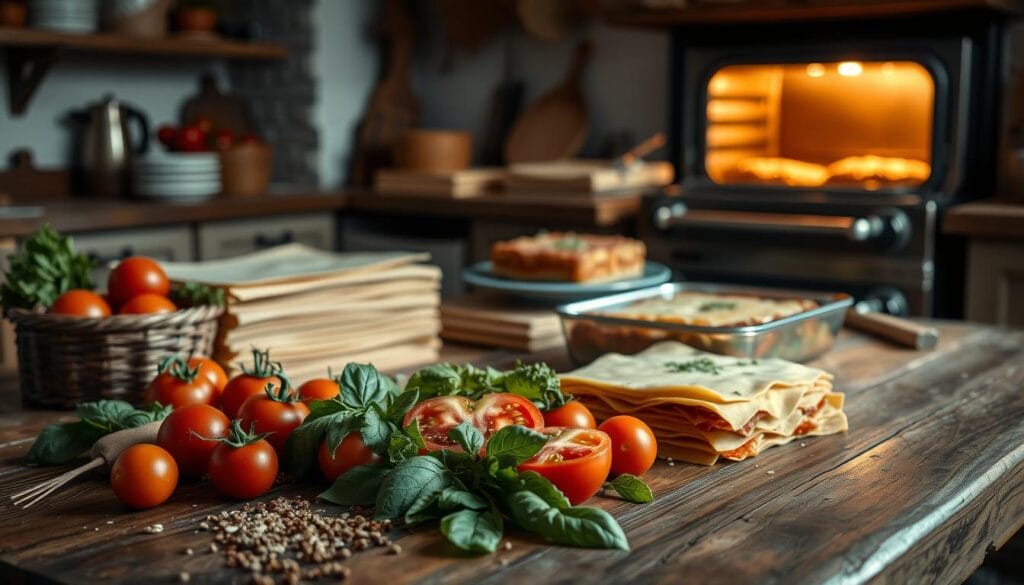
| Pathway | Oven Temp | Noodle Prep | Cheese Layer | Key Bake Times | Best Use |
|---|---|---|---|---|---|
| No-Boil, All-Cheese | 350°F | 12–15 no-boil sheets; assemble directly | Ricotta-mascarpone with Parmigiano Reggiano and basil | 30 min covered; uncover if needed for light browning | Weeknight easy lasagna recipe with quick assembly |
| Traditional, Cheese-Focused | 350°F | Boil 4–10 min; cool on oiled parchment | Cottage cheese, Parmesan, and eggs or ricotta-mascarpone | 30 min covered + 10 min uncovered | Balanced homemade lasagna recipe with tender noodles |
| Traditional, Meat-Laden | 375°F | Boil 4–10 min; keep sheets from touching | Ricotta, fontina, eggs, and nutmeg | 30 min covered + 15–20 min uncovered | Sunday-best lasagna; rich sauce, browned top for the best lasagna recipe |
| Make-Ahead & Freeze | 325°F then 375°F | No-boil or boiled; assemble and chill or freeze | Any of the above blends | From frozen: 45 min covered at 325°F, then 30 min at 375°F | Plan-ahead cooks; batch prep for a reliable homemade lasagna recipe |
Serving Suggestions and Variations
I like to complement a traditional lasagna with simple sides for a balanced plate. A crisp salad with lemony dressing cuts the richness. Broccoli or asparagus roasted nicely pairs with meat or cheese lasagnas. For an Italian meal, I add baked meatballs, garlic knots, and end with cannoli or tiramisu.
When feeding many, my lasagna starts with a meat sauce. It’s made with pancetta, sausage, and beef, spiced with basil, parsley, and oregano. A splash of red wine and beef stock, with a sugar pinch, adds depth. I use wavy noodles that I parboil for 4 minutes for firm slices.
For a vegetarian version, it’s all about the cheese and herbs. I mix ricotta and mascarpone, then add mozzarella and fontina. Parmesan tops it off, with fresh basil inside. Baking it at 350°F until golden takes about 30 minutes. For substitutions, provolone for mozzarella or Pecorino for Parmesan works. I also use rennet-free cheeses or nutritional yeast if needed.
Quick meals need fast methods, so no-boil noodles are great. Or, I might parboil noodles for firmer texture. I can prepare lasagna two days in advance. After baking, I let it rest for 30 minutes before cutting. Lasagnas can be frozen before or after baking for up to three months. Reheat until the cheese is bubbly. To watch calories, I use lower-sodium sauce and serve with veggies. For more tips and pairings, I refer to this lasagna guide.
FAQ
What makes this the best lasagna recipe for home cooks in the U.S.?
This lasagna recipe ensures a perfectly baked dish. It features savory meat sauce, rich cheese, and tender noodles. It fits a 9×13-inch pan, cooks evenly, and uses ingredients you likely have on hand.
You can choose between no-boil for quickness or parboil noodles for better structure. I also share tips on how to bake it with foil on then off for a beautiful, golden top.
How long does lasagna take to make, and how many servings do I get?
Prep takes about 25 minutes, cooking is 1 hour, and it rests for 10 minutes. In total, it’s around 1 hour and 35 minutes. You’ll get a 9×13-inch lasagna that serves 8 generously.
What oven temperature should I use—350°F or 375°F?
Use 350°F for classic or cottage-cheese lasagnas. For a meatier finish, heat the oven to 375°F. Either way, start with foil on to steam, then finish uncovered for a bubbly, browned top.
Should I use no-boil noodles or parboil dried noodles?
No-boil noodles are faster, taking about 20 minutes to assemble. Parboil dried noodles for 4 minutes if you want taller layers and neater slices. Always begin with sauce on the bottom to avoid sticking.
What’s the difference between a traditional lasagna recipe and a cheese-forward bake?
A traditional meat lasagna includes robust sauce with beef, sausage, pancetta, herbs, and wine. The cheese-forward version features ricotta, mascarpone, mozzarella, fontina, and Parmesan or Grana Padano for a rich vegetarian option.
Can I swap cottage cheese for ricotta?
Yes, use cottage cheese mixed with Parmesan and eggs for a lighter, easier version. For a luxurious texture, blend ricotta and mascarpone with basil and a hard Italian cheese.
How do I assemble the layers for a homemade lasagna recipe?
Start with sauce in the dish, followed by noodles, cheese mix, and more sauce. Repeat the layers 3 to 4 times, ending with sauce and mozzarella on top. Cover with foil to set, then uncover to brown.
How long should lasagna rest before slicing?
Let it rest for 10 to 15 minutes. This helps the layers firm up for clean cuts.
What’s the nutrition per serving?
A serving of beef-and-cottage-cheese lasagna has around 501 calories. The five-cheese version is about 574 calories. Exact numbers vary with your meat, cheese, and sauce choices.
Can I make lasagna ahead?
Yes. Prepare the meat sauce up to 2 days before. You can also fully assemble the lasagna early, just cover and refrigerate. When ready, bake as directed.
How do I store and reheat leftovers?
Refrigerate leftover slices for up to 4 days. To reheat, cover and warm at 350°F until hot. This may take 30 to 60 minutes, based on thickness.
Can I freeze lasagna?
Definitely. Freeze it baked or unbaked for 2 to 3 months. Thaw in the fridge for a day. Then, bake covered at 325°F for 45 minutes and finish at 375°F for 30 minutes. Rest 15 minutes before serving.
What sauce should I use for a classic lasagna recipe?
Choose a sturdy tomato sauce. For a speedy option, grab a jar of tomato-basil sauce. For a traditional flavor, cook a meat sauce with crushed tomatoes, tomato paste, red wine, beef stock, and fresh herbs.
Any tips for preventing watery lasagna?
Thicken the sauce, parboil noodles for just 4 minutes, and ensure the cheese mix is thick. The resting time also helps absorb excess moisture.
What cheeses melt best on top?
I recommend low-moisture mozzarella for stretch and a bit of Parmesan or Grana Padano for flavor. Fontina adds creaminess. Aim for a golden, delicious top.
Can I make a vegetarian lasagna recipe without animal rennet?
Yes. Opt for rennet-free cheeses or use more ricotta with a bit of nutritional yeast for depth. Ricotta-mascarpone is a star in this version.
What sides go well with meat lasagna or vegetarian lasagna?
Serve it with a crisp salad and vinaigrette to balance the richness. Garlic knots or crusty bread are perfect for the sauce. Add roasted veggies to complete the meal.
How do I get a gooey, browned top without overcooking?
Start by baking covered to melt the cheese and set the layers. Then uncover and bake until bubbly and browned. Broil briefly if you want more browning, but watch it closely.
What’s a simple weeknight, easy lasagna recipe?
Use no-boil noodles, lean beef with tomato-basil sauce, and a mix of cottage cheese, Parmesan, and egg. Bake at 350°F, rest for 10 minutes, then enjoy.
Can I make a gluten-free or whole wheat version?
Yes, use gluten-free sheets and a thicker sauce to avoid sogginess. Whole wheat noodles are fine too; just boil them till al dente.
How many layers should a classic lasagna recipe have?
Aim for 3 to 4 layers. More layers mean taller slices, while fewer layers cook quicker.
What’s the best way to slice and serve clean portions?
After resting for 10 to 15 minutes, cut with a sharp knife and use a wide spatula. Clean the knife between cuts for neat squares.
Can I make a meat lasagna recipe without pork?
Yes. Try all beef or a beef and turkey mix. Add some olive oil if needed, and don’t forget extra garlic, basil, oregano, and a dash of wine.
How do I adapt this traditional lasagna recipe for holidays?
Choose the meaty sauce, parboiled noodles for structure, and a mix of ricotta, fontina, and mozzarella. Prepare it a day early, then bake before your guests arrive.
Any tips for seasoning balance?
Season the meat, sauce, and cheese layers well. Finish with black pepper and fresh herbs. A touch of sugar in the sauce cuts acidity without sweetness.
What’s the difference between homemade lasagna recipe results and store-bought?
Homemade lasagna allows you to control noodle texture, sauce consistency, and cheese quality. It results in a dish with better structure, deeper taste, and a fresher, meltier topping.
Can I half the recipe for a smaller pan?
Assemble it in an 8×8-inch pan and slightly reduce the baking time. Cover first to set, then uncover for browning, and allow it to rest before slicing.

